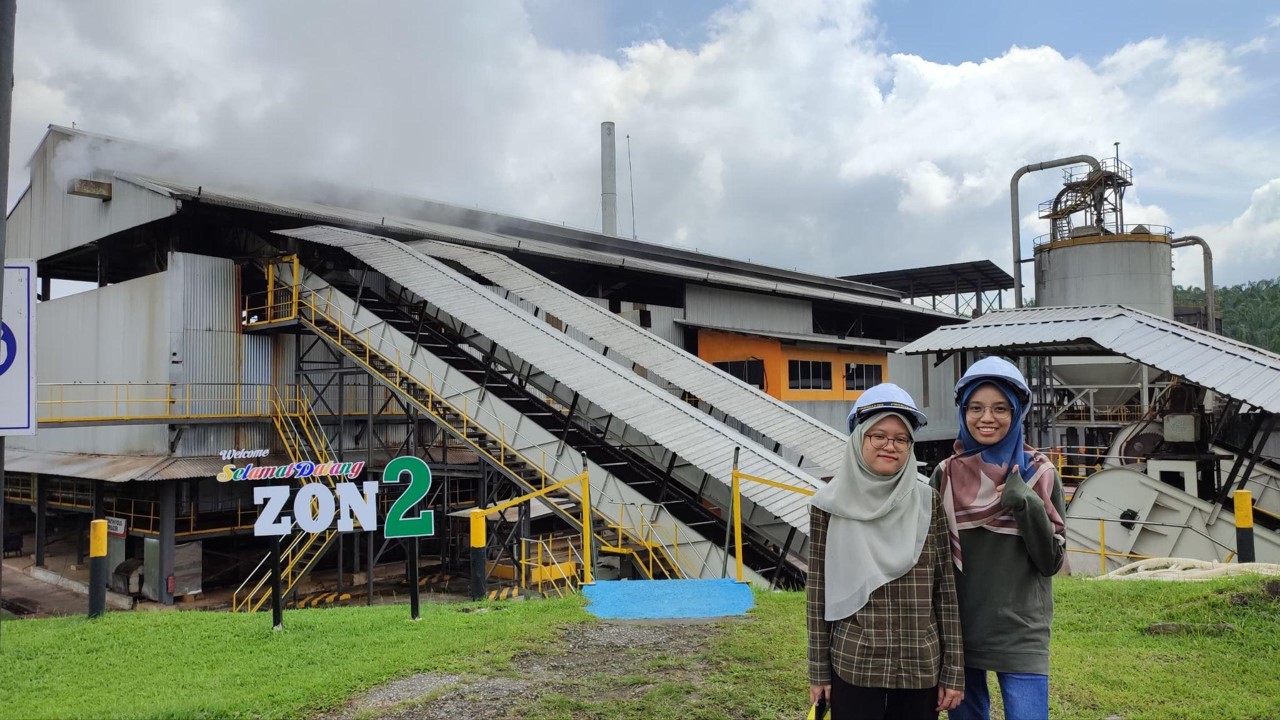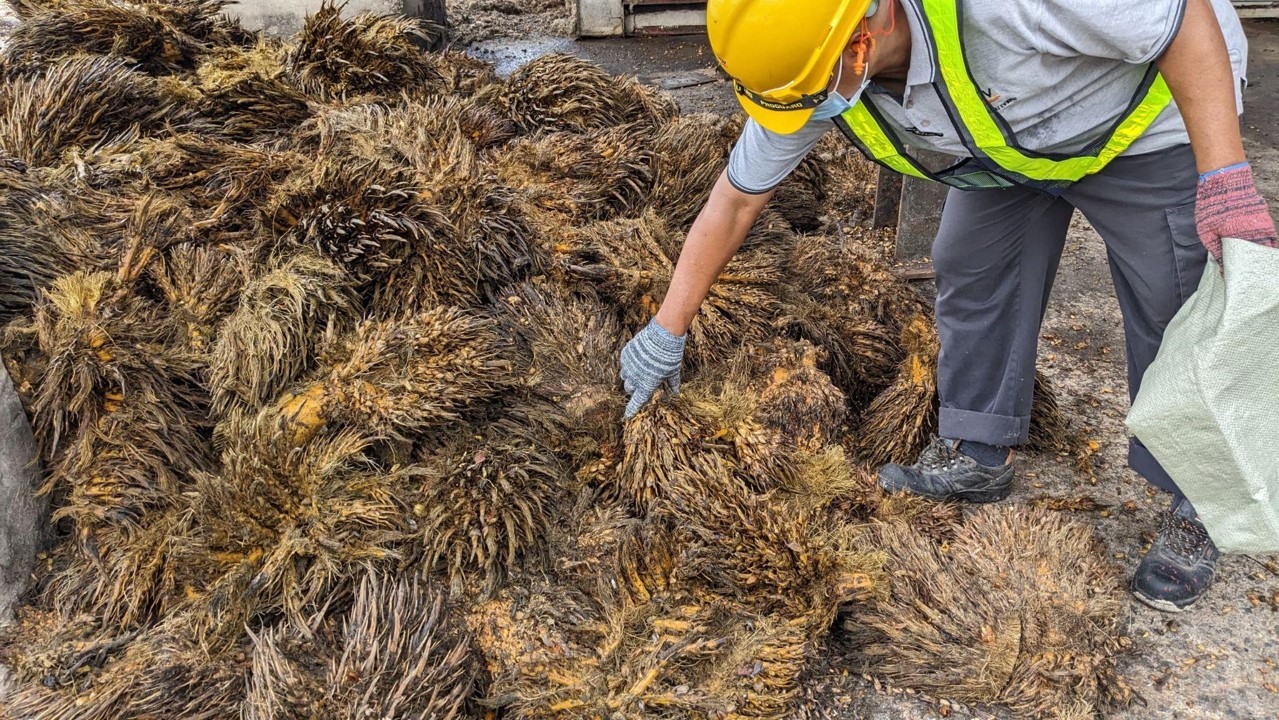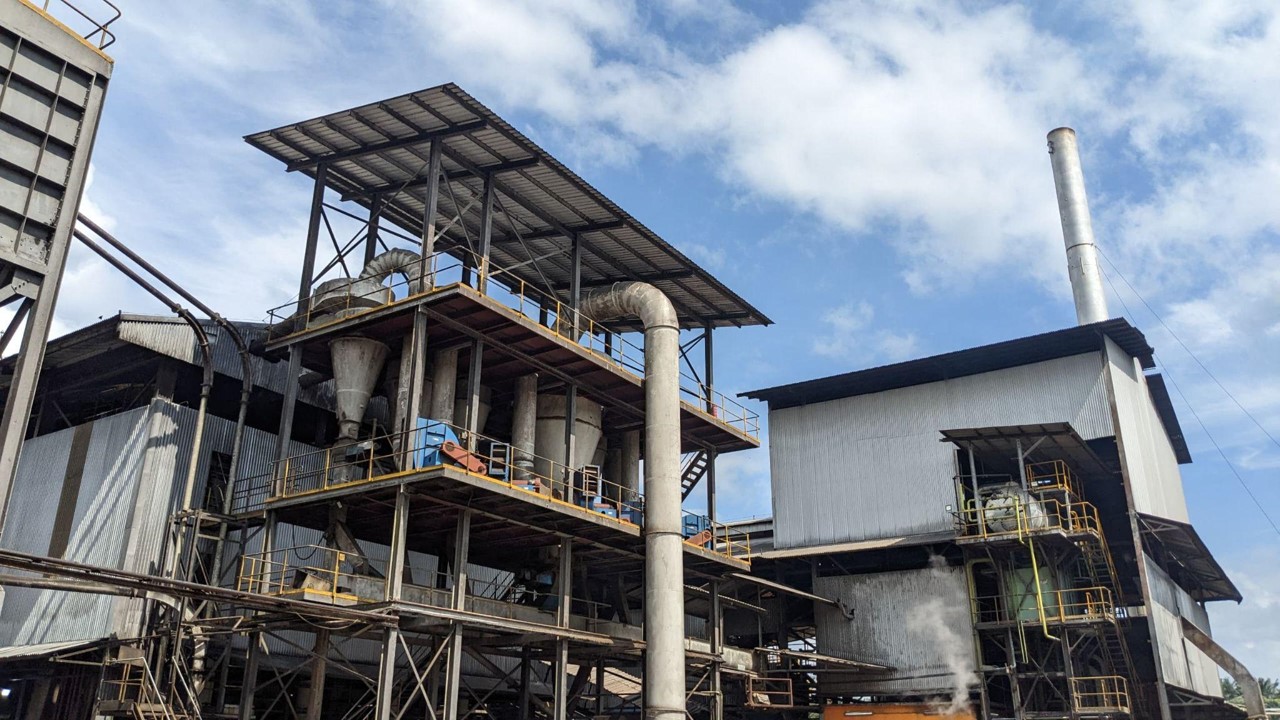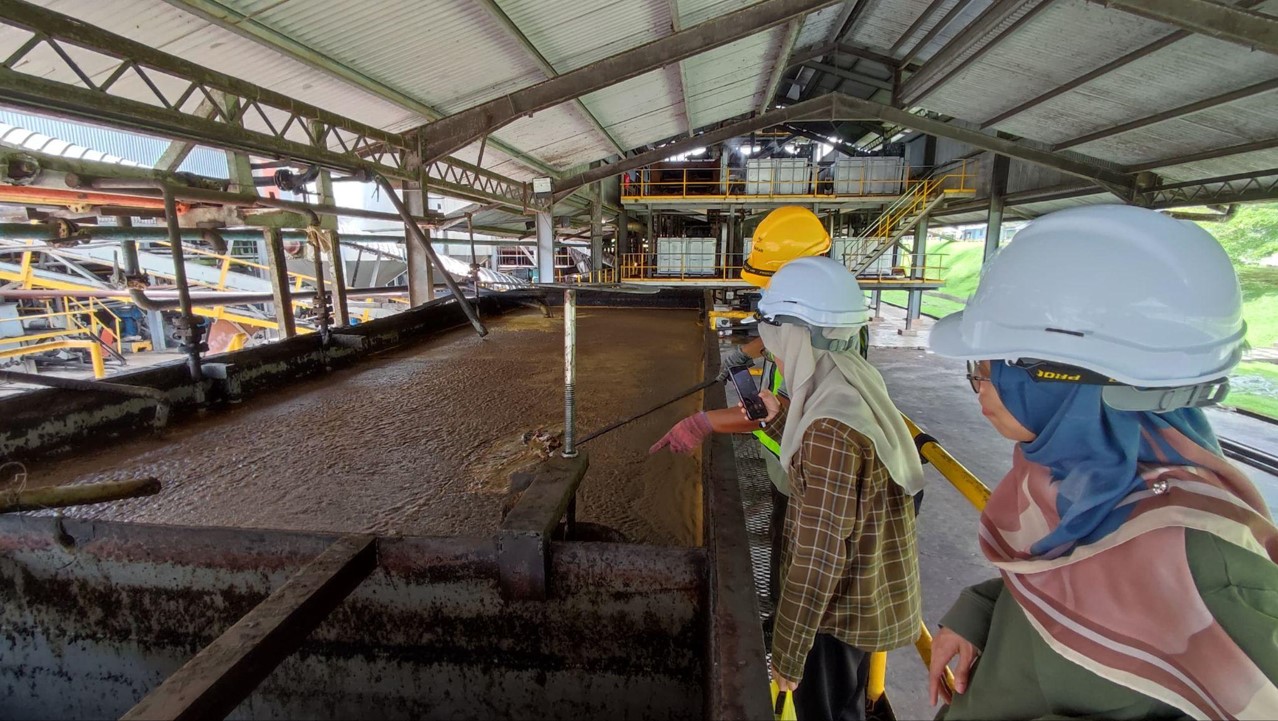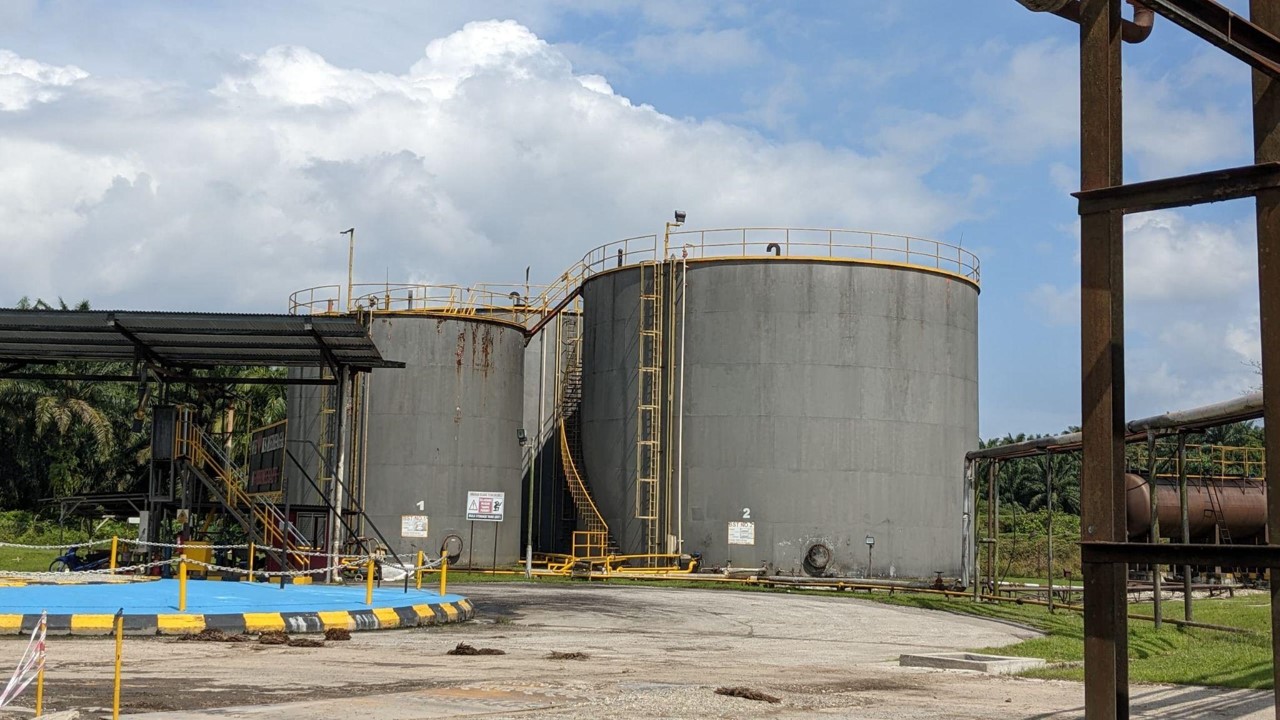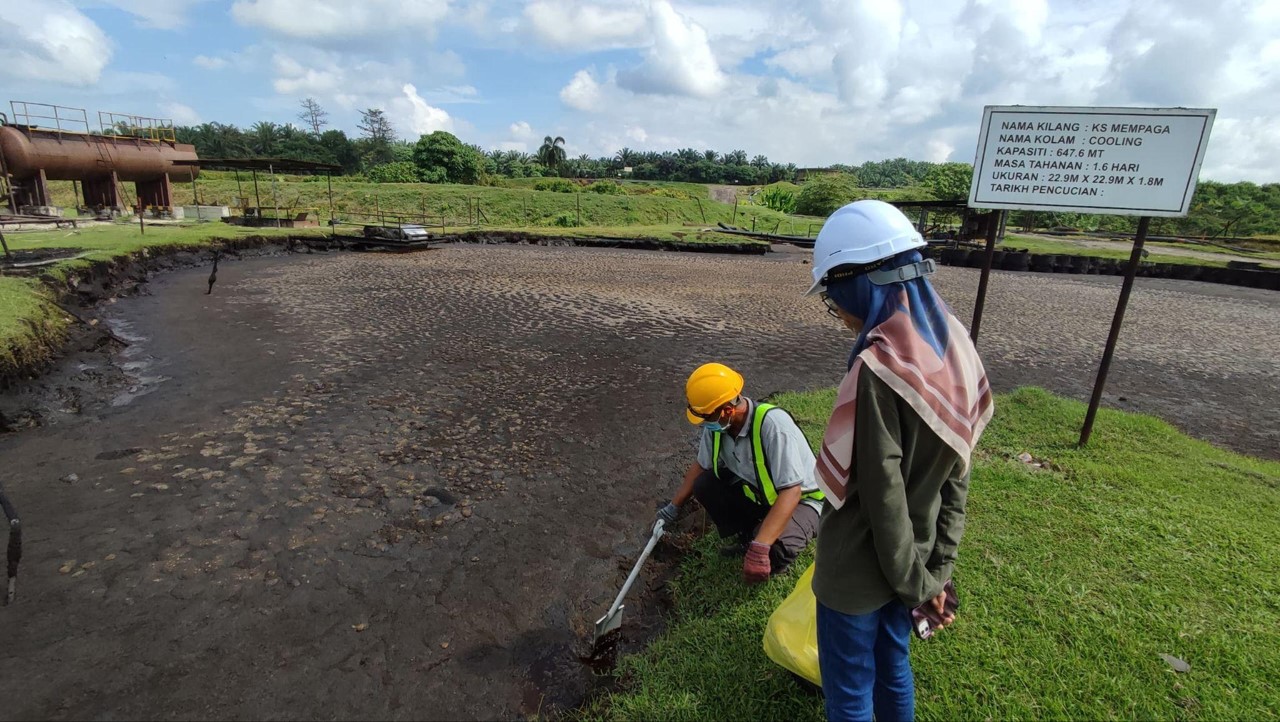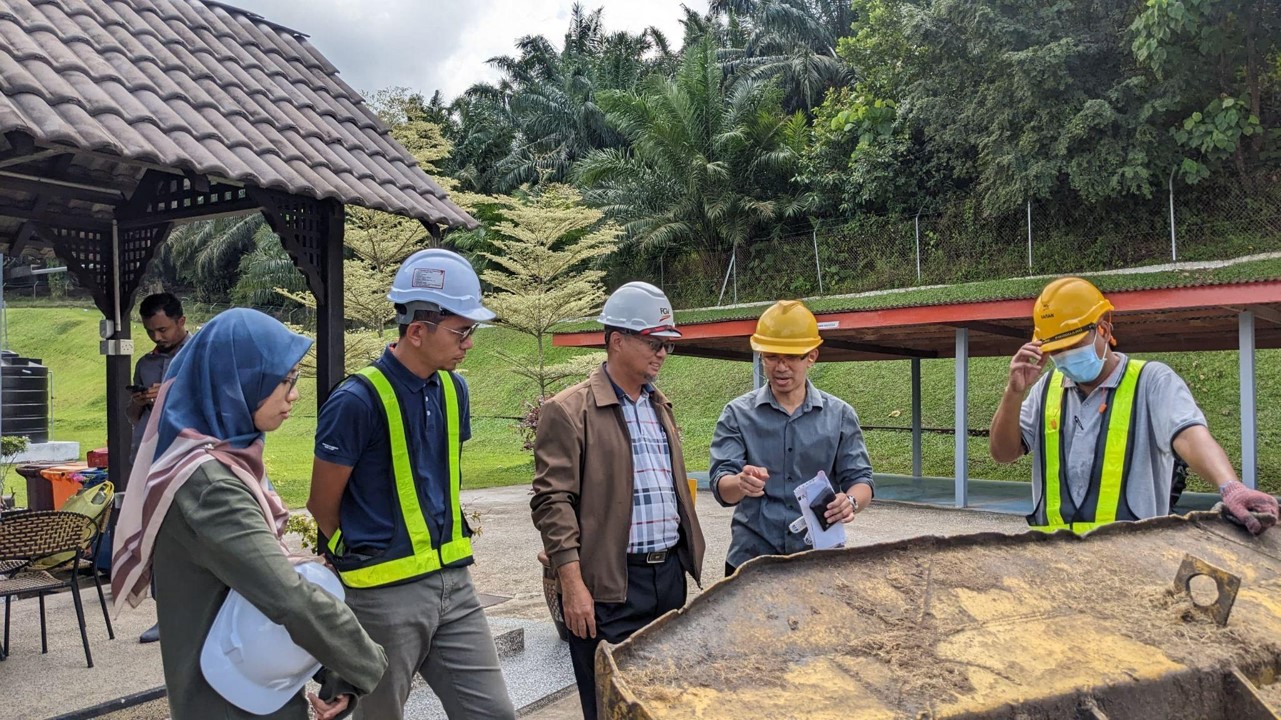On 31st January 2024, Dr Wan, Alia and Syuhada go on a valuable visit to Palm Oil Mill. Our visit to the Mempaga Palm Oil Mill in Bentong, Pahang, led by the experienced laboratory analyst, Mr. Rafian bin Ramlan, was a comprehensive exploration of the intricate process of transforming palm fruits into crude palm oil (CPO).
Upon arrival, prioritizing safety, we donned the necessary earplugs, helmets, and boots before embarking on the informative tour. Mr. Rafian first guided us through the initial stages, where we witnessed the transformation of harvested fresh fruit bunches (FFBs) into shredded empty fruit bunches (EFBs). The sterilization of FFBs to deactivate enzymes and the subsequent separation of fruits from the bunches through threshing were crucial steps in this process. The remaining EFBs were then shredded, increasing their surface area for further processing as biofuel, fertilizer, or other applications.
Next, we delved into the cyclone systems. Mr. Rafian explained how these cyclone efficiently separate the fruit into lighter fibers and heavier materials like palm kernel shells. The separated fibers found their use as fuel for the mill’s boilers or were sold for various purposes, while the palm kernel shells embarked on their own journey for further processing or potential sale.
Furthermore, we gained valuable insights into the Rotary Oil Drum Separator (RODOS). This technology plays a crucial role in efficiently separating oil from water and sludge, maximizing the recovery of valuable CPO.
Witnessing the CPO clarification tank further solidified our understanding of the process. Here, a skimmer effectively separated the CPO from the heavier sludge, ensuring a refined product ready for transfer to the storage tanks via a dedicated piping system.
The tour then progressed towards the bulk storage tanks (BST) – the temporary storage for the extracted CPO, crude palm oil. We learned about the mill’s storage capacity, comprising two 1800 tonnes tanks and one 500 tonnes tank, ensuring sufficient storage before transportation via lorries, each capable of carrying approximately 40 tonnes of CPO, to the oil refinery in Kuantan.
Mr. Rafian also shed light on the palm oil mill effluent (POME), a byproduct generated during the processing of palm fruits. We observed the POME pond, where treatment is essential before its release. Interestingly, Mr. Rafian pointed out this oil, rich in high free fatty acids (FFA) exceeding 20% while the CPO has less than 3% of FFA. This specific oil, he explained, finds valuable use in industries producing diverse products like soap and lipstick, contributing to the diverse applications of palm oil.
Beyond the technical aspects, the visit was enriched by Dr. Wan’s insightful discussions with Mr. Mohd Shafian, the Regional Controller of FGV, and Mr. Amirizzudin, the Mill Manager. These discussions provided a broader perspective on the regional palm oil industry’s operations.
In conclusion, our visit to the Mempaga Palm Oil Mill proved to be an enriching experience, offering a comprehensive understanding of the complex yet crucial process of CPO production. From the initial transformation of FFBs to separation techniques and storage solutions, we witnessed the dedication to efficient and responsible palm oil production. The visit further highlighted the diverse applications of palm oil and the continuous advancements in the industry, leaving a lasting impression on all participants.

